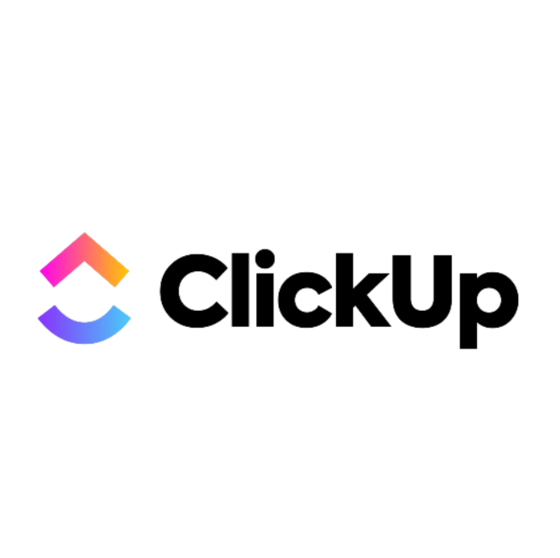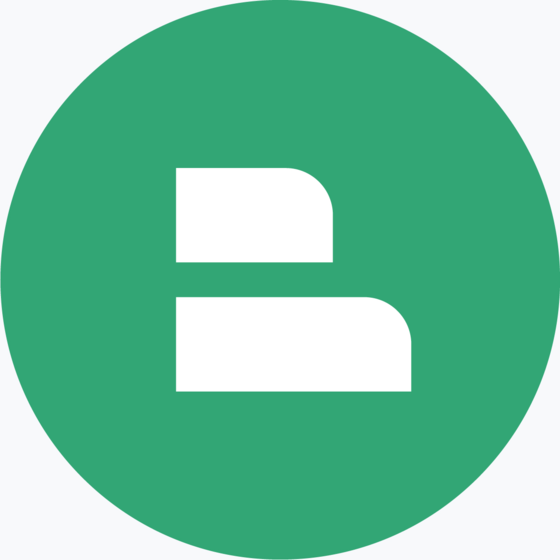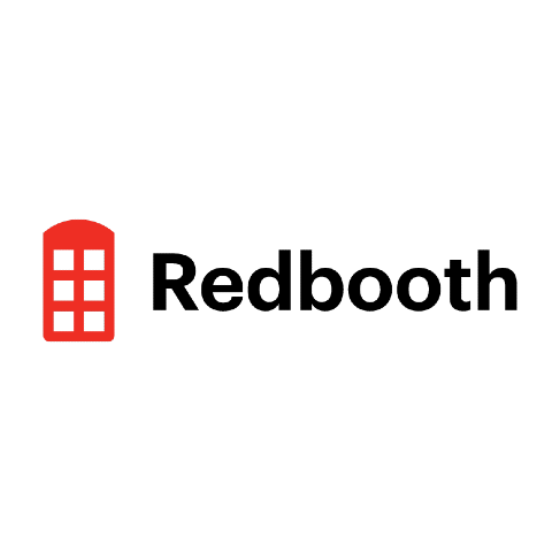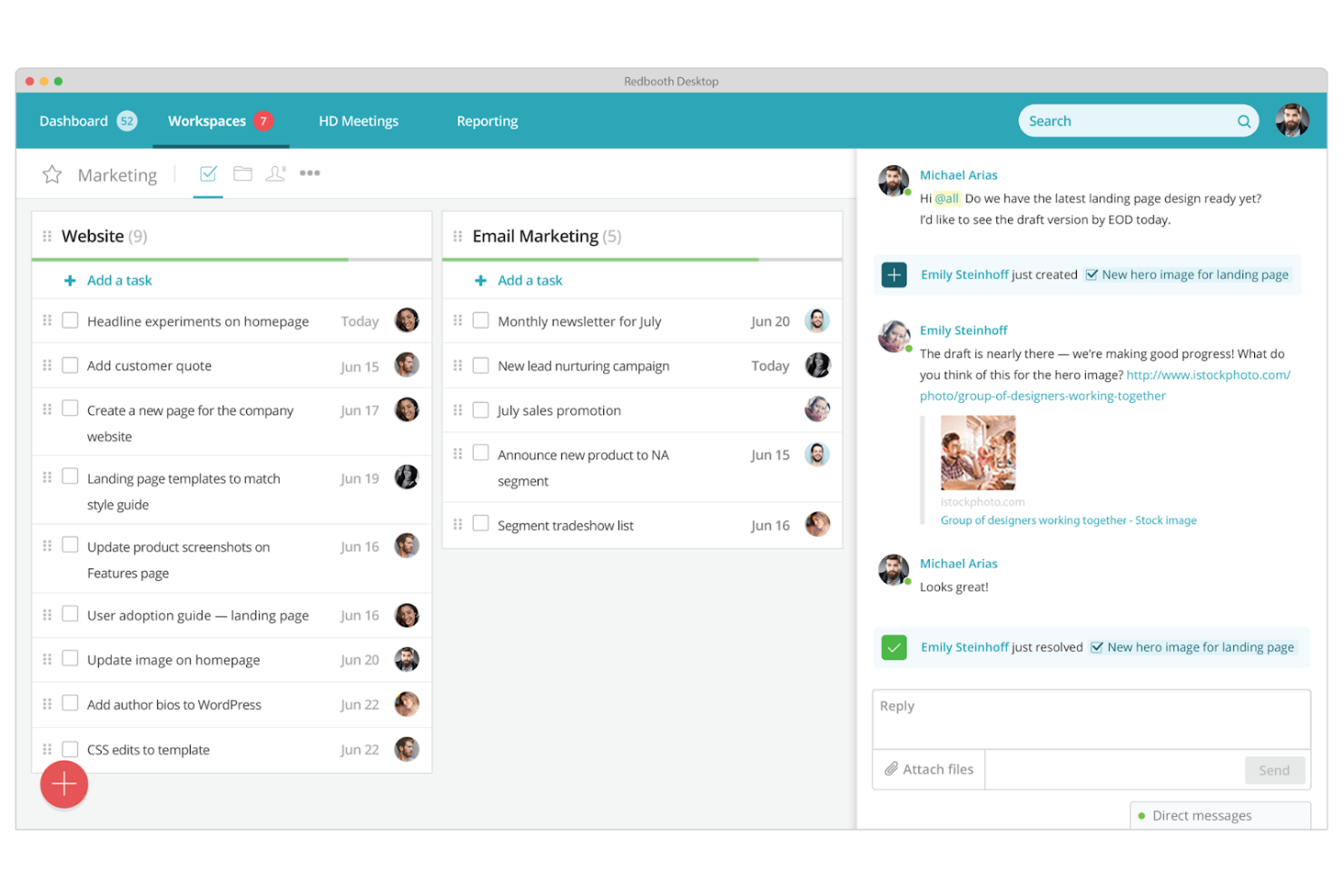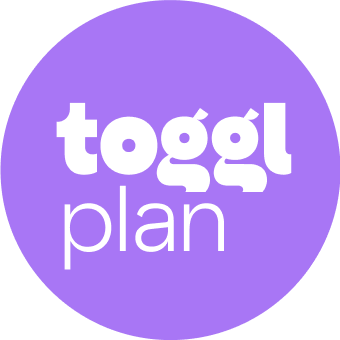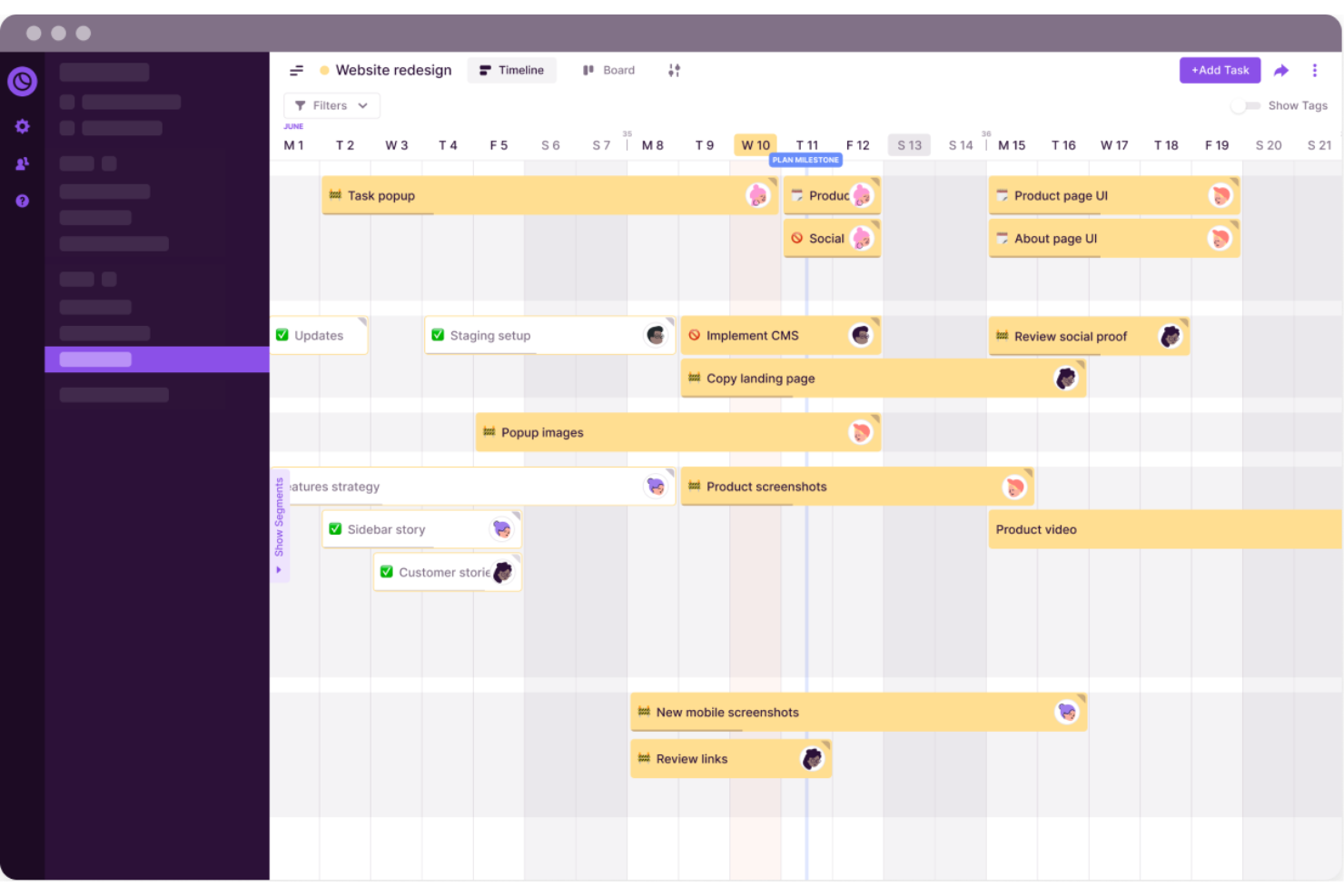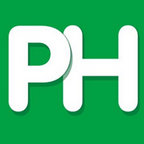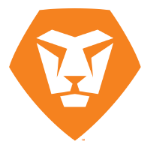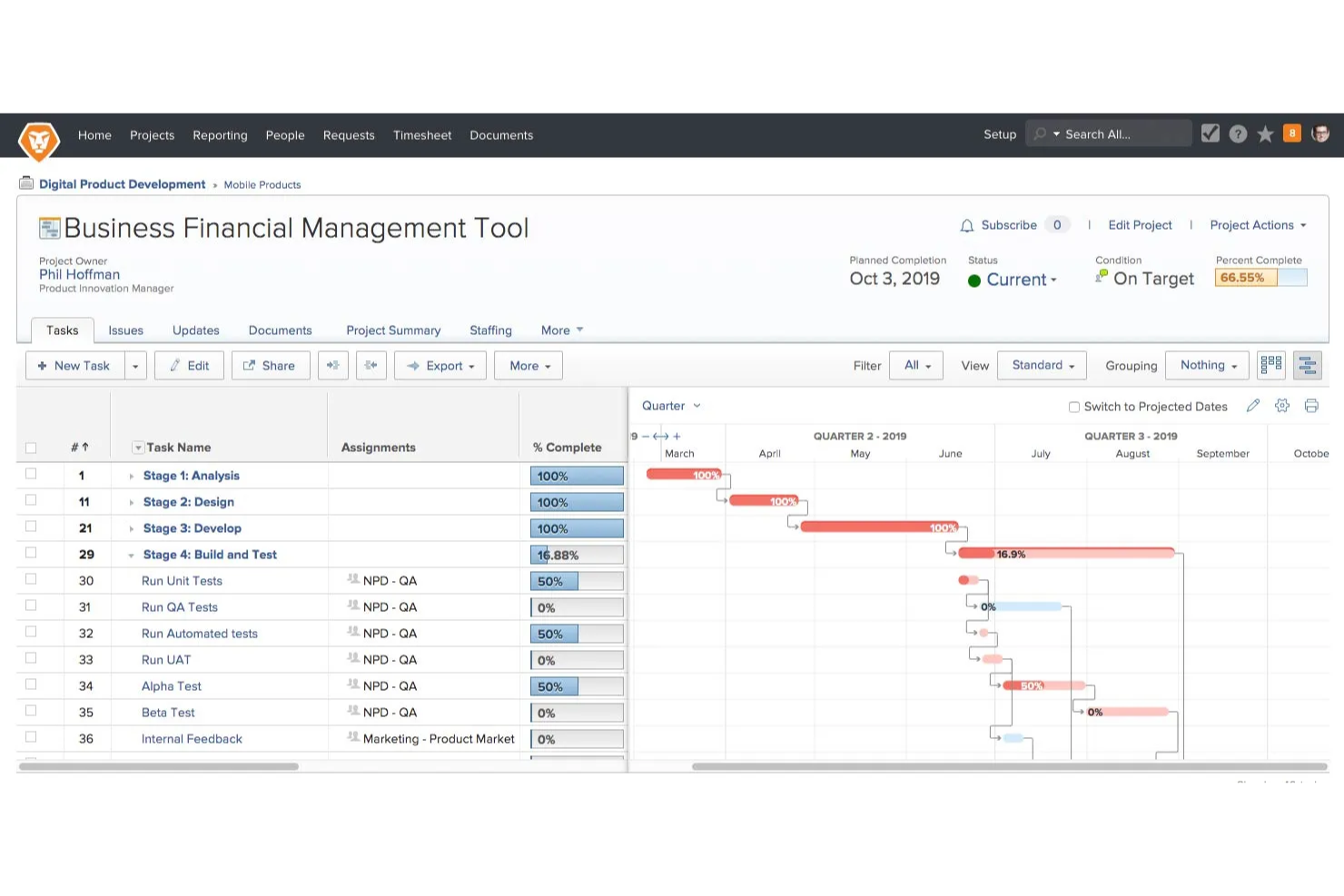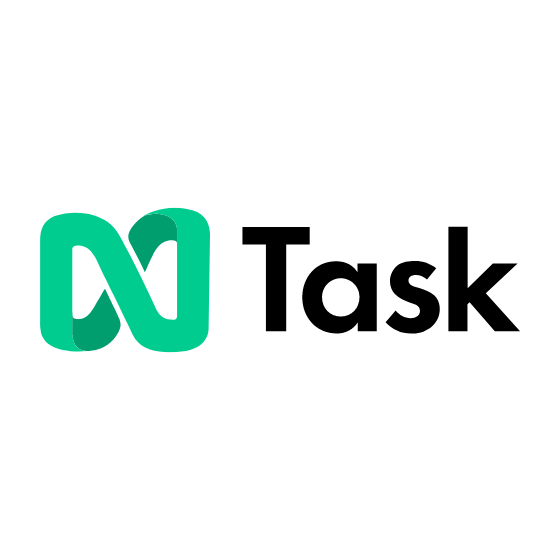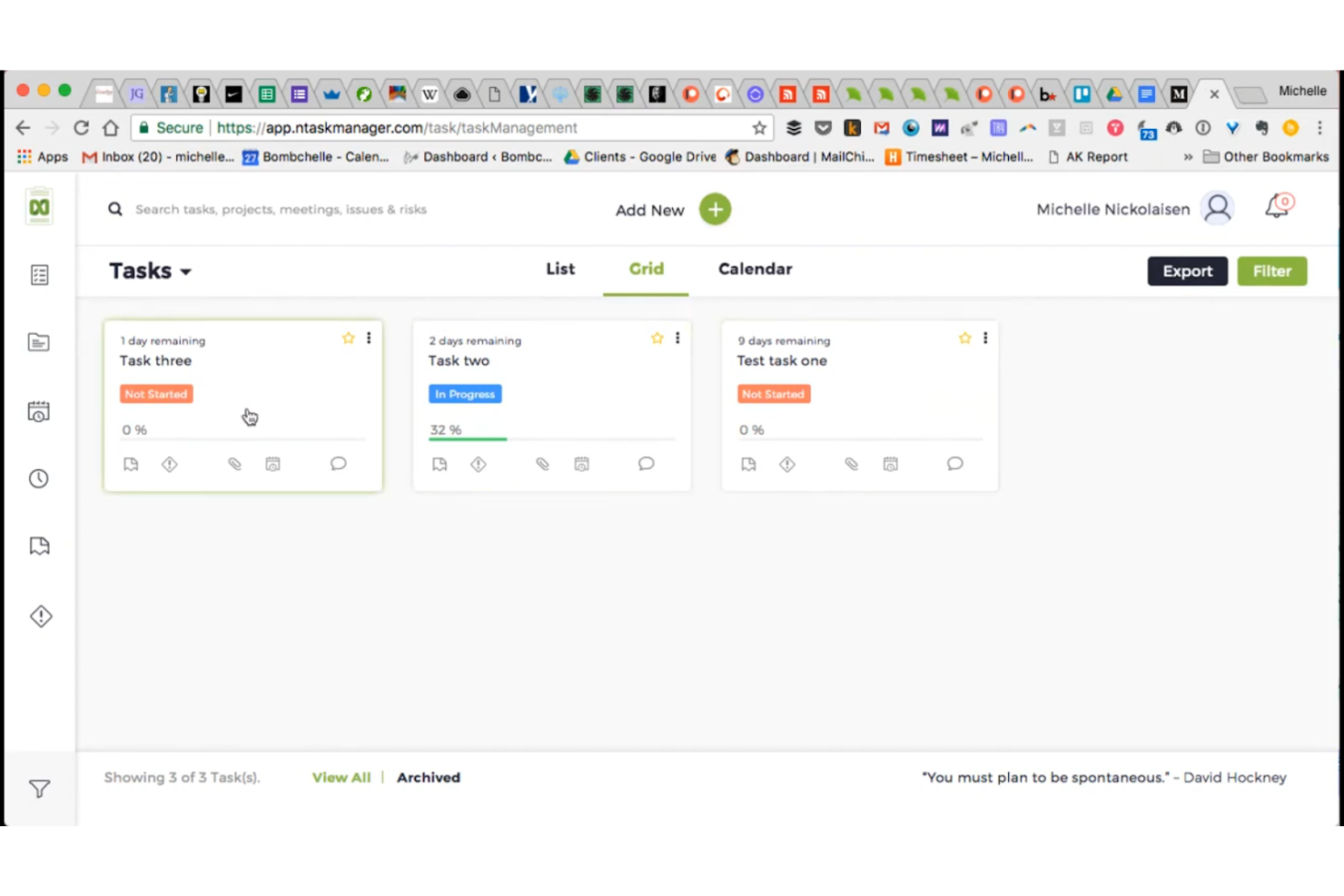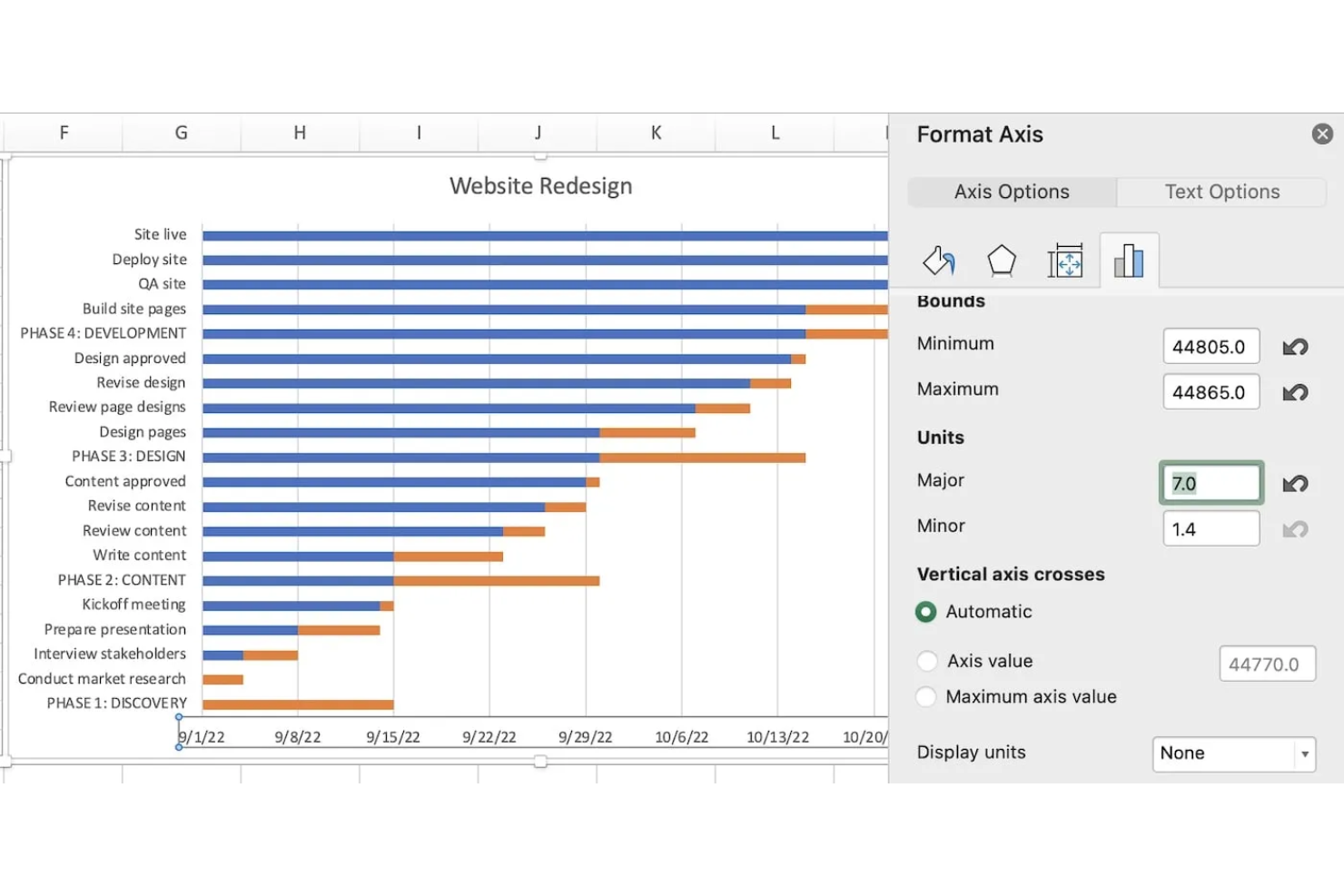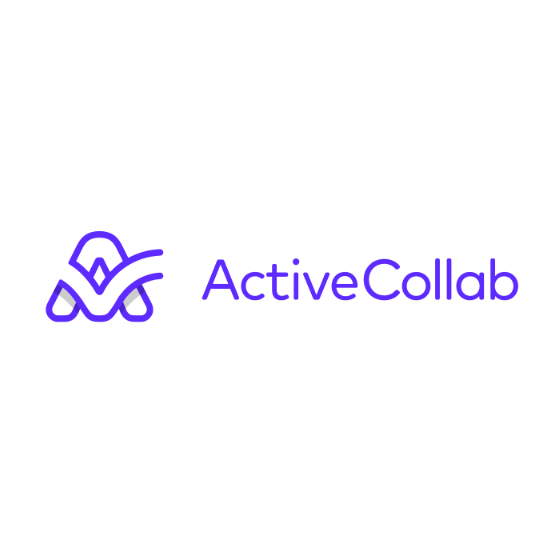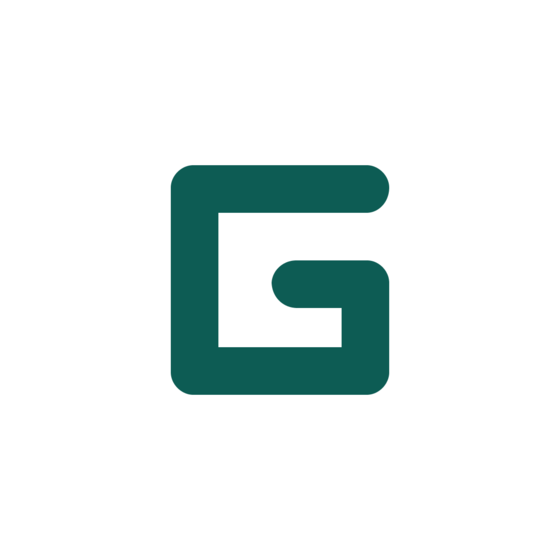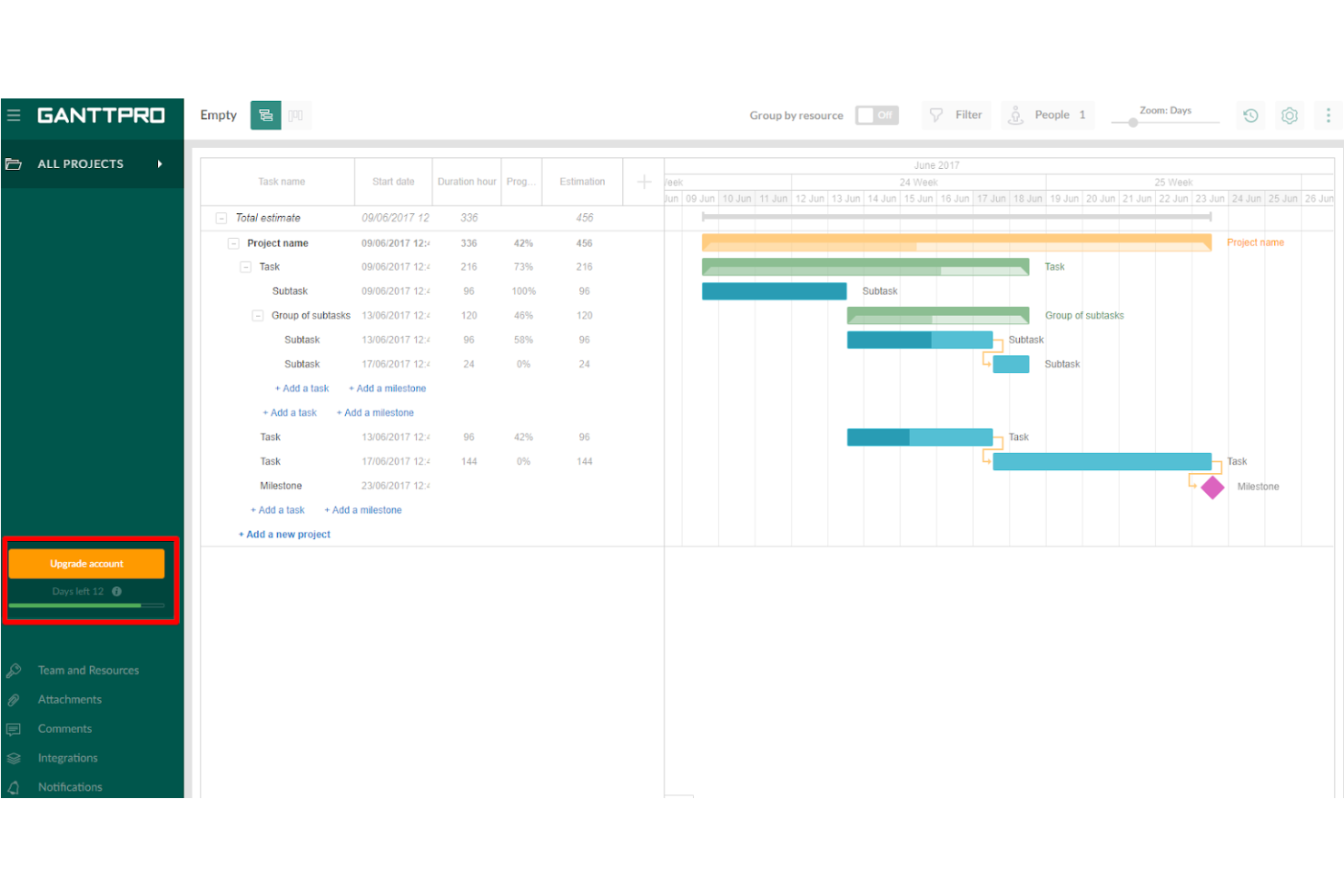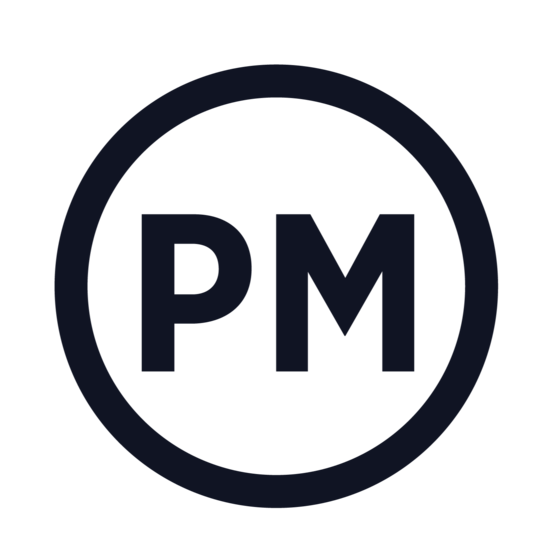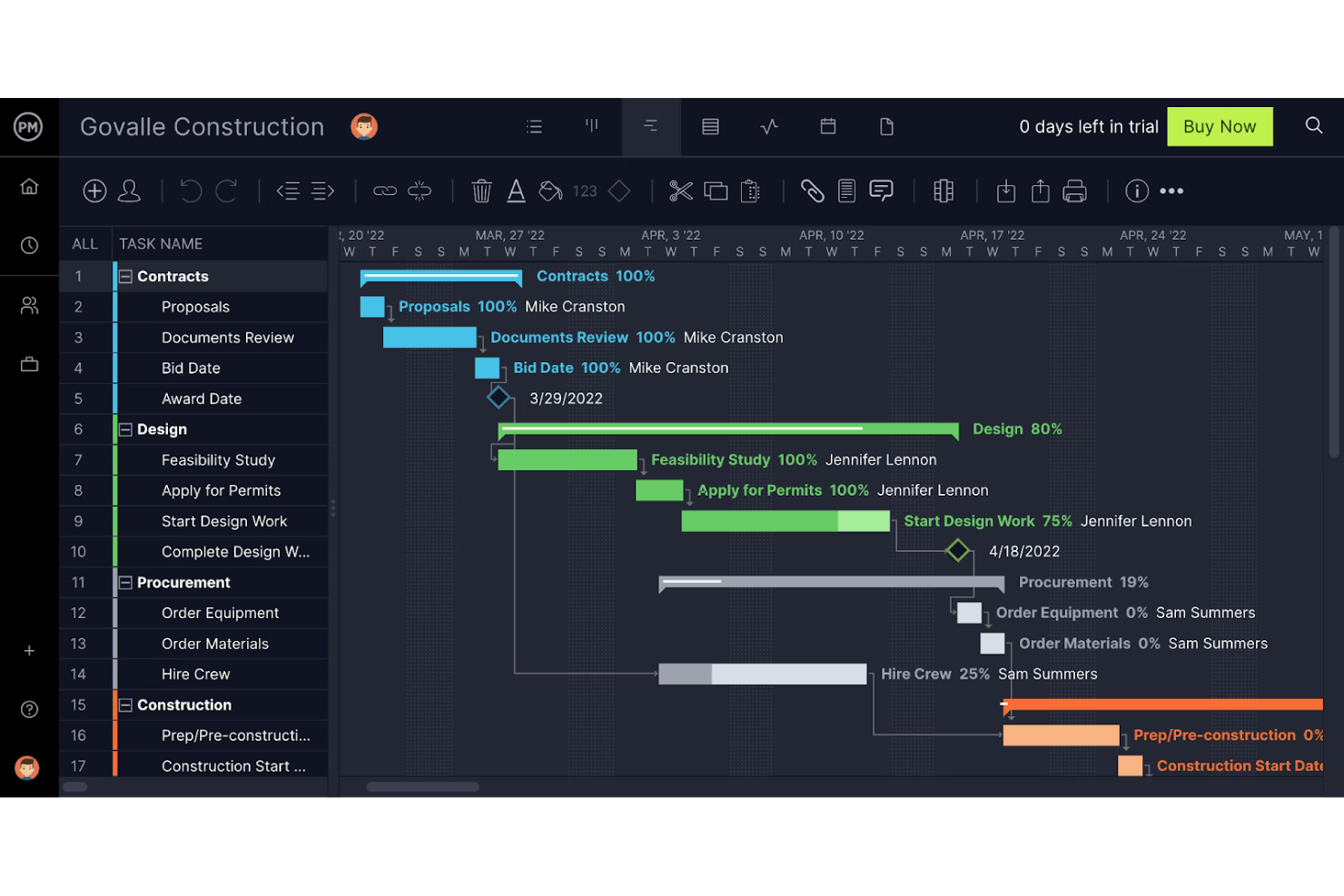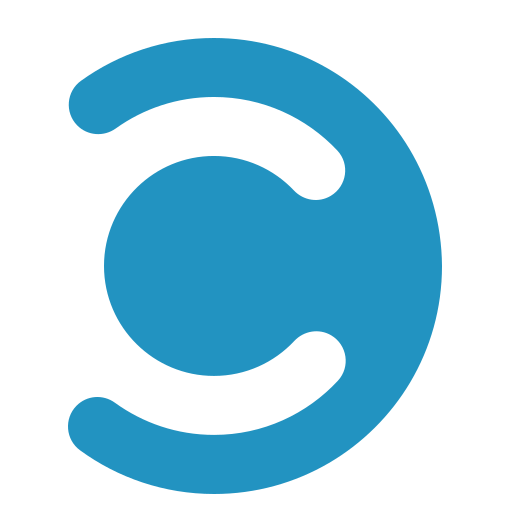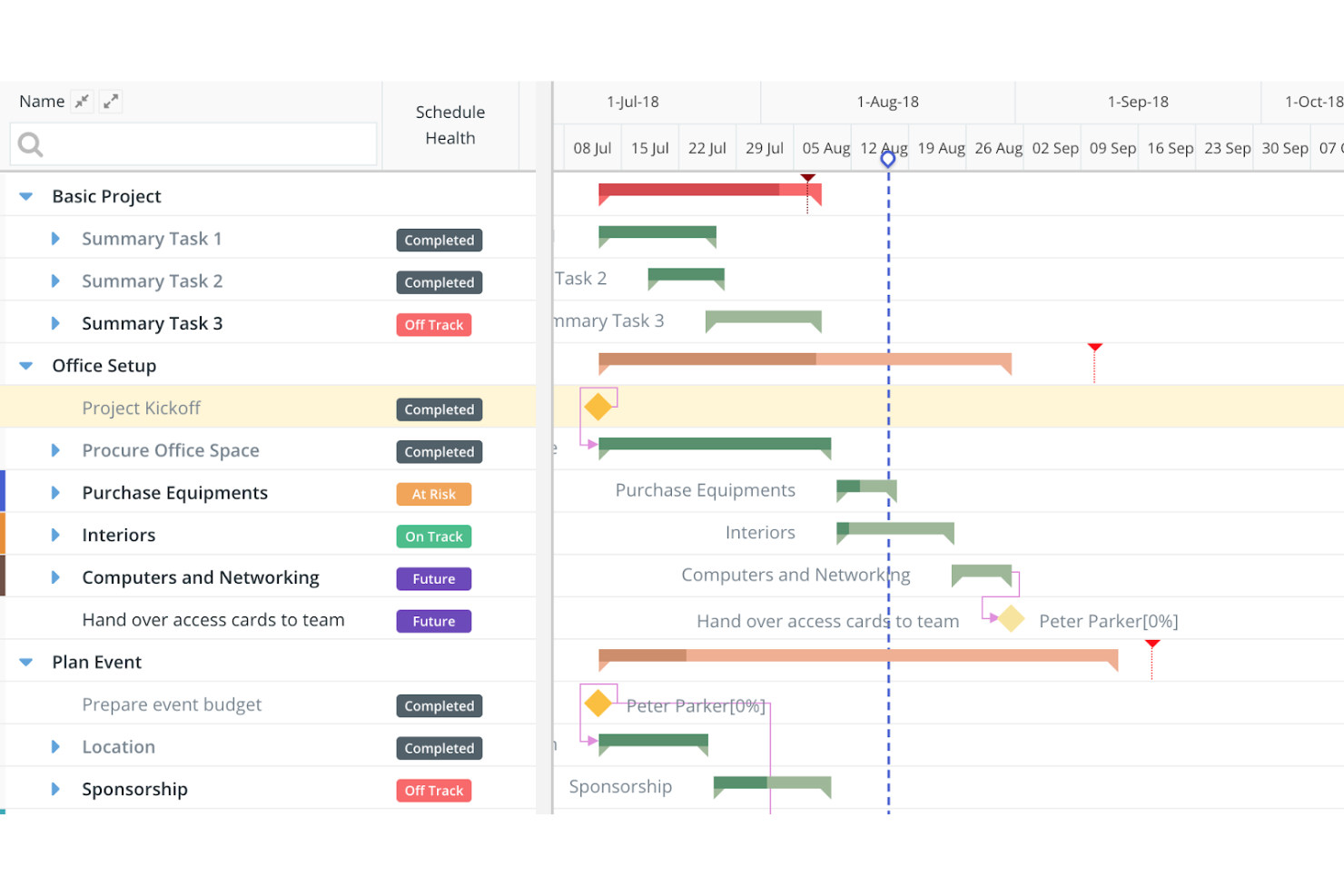Best Project Management Software with Gantt Charts Shortlist
Here’s my pick of the 10 best software from the 20 tools reviewed.
Get free help from our project management software advisors to find your match.
Project management software with Gantt charts can be transformative, yet choosing the right one presents challenges. You want a solution that can plan, track, and manage your projects, but the array of options can be overwhelming.
I've been in your shoes and I'm here to guide you through this. Drawing from my extensive experience with various tools, I know what works best. Here are my picks of the best project management software with Gannt charts.
Why Trust Our Software Reviews
We’ve been testing and reviewing project management software since 2012. As project managers ourselves, we know how critical and difficult it is to make the right decision when selecting software.
We invest in deep research to help our audience make better software purchasing decisions. We’ve tested more than 2,000 tools for different project management use cases and written over 1,000 comprehensive software reviews. Learn how we stay transparent & our review methodology.
Best Project Management Software with Gantt Charts Summary
We’ve investigated the pricing and availability of free trials and demo versions so you can make a much simpler side-by-side comparison.
| Tools | Price | |
|---|---|---|
| Redbooth | From $9/user/month (billed annually) | Website |
| Toggl Plan | From $8/user/month | Website |
| ProofHub | From $45/month (billed annually) | Website |
| Adobe Workfront | Pricing upon request | Website |
| nTask | From $3/user/month (min 5 seats) | Website |
| TeamGantt | From $49/user/month | Website |
| ActiveCollab | From $3.17/user/month (billed annually) | Website |
| GanttPRO | From $7.99/user/month (billed annually) | Website |
| ProjectManager | From $13/user/month (billed annually) | Website |
| Celoxis | From $25/user/month (billed annually) | Website |

Compare Software Specs Side by Side
Use our comparison chart to review and evaluate software specs side-by-side.
Compare SoftwareHow To Choose Project Management Software With Gantt Charts
As you work through your unique software selection process, remember the following points.
- Ease of Use: The software should be intuitive and user-friendly. A steep learning curve can be a significant barrier to adoption, so selecting a tool that team members can quickly become comfortable with is important. For instance, project managers who are not tech-savvy will benefit from a straightforward interface that simplifies creating and updating Gantt charts.
- Integration Capabilities: Look for software that integrates well with your other tools. This is important for maintaining data consistency and saving time on data entry. For example, a marketing agency might need project management software that integrates with its CRM to track client projects efficiently.
- Customization: The ability to customize the software to fit your project management needs is essential. This includes custom views, fields, and workflows. A construction company, for instance, may require custom fields to track specific project details like materials used or regulatory compliance.
- Resource Management: Effective resource management features are a must-have. The software should help you allocate resources efficiently and avoid over-scheduling. In IT projects, this could involve balancing the workload among developers to ensure timely project delivery without burnout.
- Reporting and Analytics: Strong reporting tools are necessary to track progress and analyze project data. This helps in making informed decisions and identifying areas for improvement. A software development team, for example, would benefit from detailed reports on sprint progress and bug resolution times.
Best Project Management Software with Gantt Charts Reviews
Below is an in-depth analysis and comparison of top project management software with Gantt chart functionalities. Each review highlights the pros and cons, key features, and best use cases for these tools.
Redbooth is a project management tool that simplifies team tasks and project organization. It's ideal for those who appreciate AI-driven assistance in managing their workloads.
Why I Picked Redbooth: I chose Redbooth because its AI features offer user recommendations and due date predictions, enhancing task management. Redbooth is best for teams that value AI assistance. It uses historical task data to intelligently guide project planning and execution, ensuring tasks are completed efficiently.
Standout features & integrations:
Features include intuitive Kanban boards, detailed productivity reports, visual project timelines, and Gantt charts. These features help with better task management and project tracking. It also includes mobile app support for iOS and Android.
Integrations include Zoom, Outlook, Workspace, Box, Slack, Zapier, WebEx, Evernote, Clockify, Dropbox, and Google Drive.
Pros and cons
Pros:
- Mobile app for on-the-go access
- Visual project timelines with Gantt charts
- AI-powered features for task management
Cons:
- Limited storage in the free plan (2 GB)
- Dependency feature in Gantt charts is not included in the free plan
Toggl Plan is a project management tool that simplifies planning with drag-and-drop timelines. It's best for teams that value visual simplicity in project scheduling and workload management.
Why I Picked Toggl Plan: I chose Toggl Plan for its intuitive interface that simplifies project management through visual planning. Its drag-and-drop timelines make it easy to adjust plans on the fly, which is essential in dynamic team environments. I believe Toggl Plan is best for agencies and teams that need a straightforward tool to manage complex projects without the clutter of unnecessary features.
Standout features & integrations:
Features include time tracking, reporting, project tracking, revenue tracking, and team scheduling. The scheduling software’s interface and drag-and-drop options make switching between tasks easy.
Integrations include Toggl Track. Slack, Asana, Jira, Podio, and Gitlab.
Pros and cons
Pros:
- Customizable features like custom colors and favorites for personalization
- Integration with Toggl Track for enhanced time tracking
- Intuitive drag-and-drop timelines for easy planning
Cons:
- May not be suitable for very large teams or complex enterprise needs
- No free plan available
ProofHub is an all-in-one project management and team collaboration tool. It's best for teams that need a comprehensive solution without worrying about per-user fees.
Why I Picked ProofHub: I chose ProofHub for its complete feature set that caters to various team needs, from marketing to product development. Its flat-rate pricing model stands out as it allows unlimited users without additional costs. ProofHub is best for teams that require a solid project management tool but want to avoid the complexity of per-user pricing, ensuring budget predictability.
Standout features & integrations:
Features include task management, Gantt charts, board and table views, calendars, time tracking, and custom workflows. It also provides collaboration tools like discussions, proofing, notes, announcements, and chat.
Integrations include Google Drive, OneDrive, Box, Dropbox, Google Calendar, iCal, Outlook, QuickBooks, FreshBooks and Zapier.
Pros and cons
Pros:
- Intuitive user interface and flexibility in use
- Comprehensive feature set for various team functions
- Flat-rate pricing with no per-user fee
Cons:
- May have a learning curve for new users
- Limited customization options compared to some competitors
Workfront is an enterprise work management platform that helps teams prioritize and execute projects strategically. It is best for marketing and IT teams that require alignment of their projects with the company's strategic goals.
Why I Picked Workfront: I chose Workfront for its unique approach to project management. Its ability to provide visibility into project status and resource utilization makes it stand out from other project management tools. Workfront is best for marketing and IT teams because it offers features that encourage strategic execution and ensure that projects contribute to the broader business goals.
Standout features & integrations:
Features include work automation, goal alignment, scenario planning, budget and expense management, workflow management, proofing and approvals, agile work management, and reporting dashboards. These features help teams to launch projects quickly, prioritize high-value work, and gain real-time visibility into project progress.
Integrations include Adobe Experience Cloud, Creative Cloud, Marketo Engage, and Experience Manager.
Pros and cons
Pros:
- Real-time project visibility
- Strategic planning capabilities
- Comprehensive project management features
Cons:
- Slower loading times for complex projects
- May require contact with sales for detailed pricing and feature information
nTask is an all-in-one project management solution that simplifies task management, planning, and team collaboration.
Why I Picked nTask: I chose nTask for its features that cater to various aspects of project management, making it a versatile tool for different team needs. Its comprehensive nature sets it apart from other software that may specialize in only one or two areas of project management.
I believe nTask is best for teams desiring an all-in-one platform because it integrates task management with additional tools like Gantt charts, issue tracking, and risk management, which are essential for handling complex projects efficiently.
Standout features & integrations:
Features include interactive Gantt chart software, Kanban boards for organizing and collaborating, and time tracking to monitor team productivity. It also offers risk management tools and the ability to manage meetings within the platform.
Integrations include over 1000+ apps, including Google Calendar, Outlook Calendar, Apple iCal, Zapier, Zoom, Microsoft Teams, and Slack.
Pros and cons
Pros:
- Provides comprehensive project management features
- Integrates with over 1000+ apps
- Offers a free plan for small teams
Cons:
- The free plan is limited to 5 users
- No refunds offered for subscription plans
TeamGantt is a project management tool that simplifies task scheduling and collaboration. It's best for teams seeking free Gantt chart software that supports unlimited projects and collaborators.
Why I Picked TeamGantt: I chose TeamGantt for its intuitive interface and the ability to offer free Gantt charts without sacrificing quality or functionality. This tool stands out for its ease of use and the fact that it caters to various industries, from digital agencies to construction and marketing teams. I believe TeamGantt is best for teams that require robust Gantt chart capabilities without any financial commitment, ensuring that project management is accessible to everyone.
Standout features & integrations:
Features include drag-and-drop simplicity for changing start and end dates, viewing all projects on one screen, managing workloads and team availability, and collaborating easily with stakeholders. The tool also provides portfolio views, reports, and multiple project views such as calendar, list, and board formats.
Integrations include Slack, Trello, Basecamp, Google Calendar, Microsoft Project, JIRA, Asana, Dropbox, Google Drive, and Box.
Pros and cons
Pros:
- Integrations with popular tools like Trello, Slack, and Dropbox
- Intuitive drag-and-drop interface for easy scheduling and adjustments
- Free Gantt chart software for unlimited projects and collaborators
Cons:
- May lack some advanced features that competitor may have
- Limited to 20 projects per manager on the Pro plan
ActiveCollab simplifies project management and time tracking for businesses. It's ideal for companies seeking a solid platform to manage workloads and monitor project progress.
Why I Picked ActiveCollab: I selected ActiveCollab because its focus on real work execution is particularly beneficial for businesses that must manage projects effectively and track time. ActiveCollab provides features essential for managing projects, fostering team collaboration, and ensuring accurate time tracking, which is critical for productivity and profitability.
Standout features & integrations:
Features include project planning, team collaboration, and time tracking. It offers various task views, such as Gantt charts for project scheduling and Kanban boards for workflow visualization. The tool also includes workload management to help evenly distribute tasks and client management functionalities to enhance customer engagement.
Integrations include Slack, Google Drive, Dropbox, QuickBooks, PayPal, Stripe, Zapier, Hubstaff, Timecamp, and Trello.
Pros and cons
Pros:
- Extensive native integrations
- Variety of task views, including Gantt charts and Kanban boards
- Comprehensive project management and time tracking
Cons:
- The system can sometimes run slow
- It is difficult to search for files and data within the tool
GanttPRO is an online Gantt chart software for efficient project planning and collaboration. It is best for teams that require advanced Gantt chart features to simplify their project planning processes.
Why I Picked GanttPRO: I chose GanttPRO because of its features that cater to detailed project planning and management. Its ability to create visually appealing Gantt charts stands out, providing a clear picture of project tasks, deadlines, and dependencies.
GanttPRO is best for teams that need sophisticated project planning tools. It offers advanced planning capabilities, including dependencies, auto-scheduling, and custom fields, which are essential for managing complex projects.
Standout features & integrations:
Features include task management with bulk changes and custom fields, real-time data synchronization for collaboration, and resource management with workload views. It also provides time tracking, budget tracking, and the ability to create project baselines and critical paths.
Integrations include Slack, Google Drive, Jira Cloud, OneDrive, Microsoft Project, Microsoft Teams, and Microsoft Excel.
Pros and cons
Pros:
- Native integrations with popular tools like Slack and Google Drive
- Real-time data synchronization for team collaboration
- Advanced Gantt chart features for detailed project planning
Cons:
- Custom quote needed for the Enterprise plan, which may not be suitable for smaller teams
- A minimum of 5 users is required for the Basic plan
ProjectManager is a cloud-based project management software with Gantt charts for project planning, task scheduling, and real-time progress tracking. It allows for easy setting of task dependencies and milestones, providing a visual timeline that updates dynamically as team members adjust their tasks. Thus, it enhances collaboration and ensures project schedules are maintained efficiently.
Why I Picked ProjectManager: I chose ProjectManager for the list because it offers a broad range of features that can be tailored to meet the specific needs of different industries. This flexibility is what makes it different from other project management software.
I think it's best for diverse teams needing industry-specific tools due to their adaptability and ability to customize their features to fit various sectors' unique workflows and processes.
Standout features & integrations:
Features include Gantt charts, real-time dashboards, and workload management tools. It also provides collaboration features that facilitate team communication.
Integrations include Slack, Google Drive, Microsoft Office, Salesforce, Trello, Jira, Hubspot, Power BI, Acumatica, OneDrive, Dropbox, Desk.com, QuickBooks, and Xero.
Pros and cons
Pros:
- Real-time data and reporting
- Integrates with many popular tools
- Customizable for various industries
Cons:
- May be a learning curve for some users
- Automation feature can take time to learn
Celoxis is a project management tool that facilitates the management of project portfolios, resources, and workflows. It is best for teams that require a solution that balances features, ease of use, and value.
Why I Picked Celoxis: I chose Celoxis for this list because it caters to the needs of various teams and projects. Its all-in-one project portfolio management capability sets it apart from other tools by providing a single platform for managing multiple aspects of project work. I believe Celoxis is best for teams needing a versatile tool that can handle complex project management tasks without compromising user-friendliness or affordability.
Standout features & integrations:
Features include automatic scheduling, inter-project dependencies, project tracking, financial management, portfolio management, resource management, and reporting capabilities. It also includes task management, custom workflows, what-if analysis, multilingual support, and customizable dashboards.
Integrations include Microsoft Project, QuickBooks Online, Zapier, Excel, Google Drive, Outlook, Salesforce, Jira, Slack, Trello
Pros and cons
Pros:
- Offers a 14-day free trial for evaluation
- Integrates with a wide range of business applications
- Comprehensive project portfolio management features
Cons:
- Steeper learning curve for new users
- Requires a minimum of 5 full-access user accounts
Other Project Management Software With Gantt Charts
Below is a list of additional project management software with Gantt charts that we shortlisted but did not make it to the top list. It is definitely worth checking them out.
Related Project Management Software
If you still haven't found what you're looking for, check out these related project management tools we've tested and reviewed.
- Project Management Software
- Resource Management Software
- Workflow Automation Software
- Task Management Software
- Collaboration Tools
- Gantt Chart Maker
Project Management Software With Gantt Charts Selection Criteria
As an expert who has personally tried and researched project management software With Gantt Charts, I have developed a set of criteria that reflect the most important aspects buyers should consider.
Core Project Management Software With Gantt Charts Functionalities (25% of total score):
To be considered for inclusion in this list, each solution had to fulfill these common use cases first:
- Task scheduling and tracking: Ensuring tasks are completed on time.
- Resource allocation: Assigning the right resources to tasks.
- Progress monitoring: Visualizing project timelines and milestones.
- Collaboration: Facilitating communication among team members.
- Reporting: Generating insights on project status and resource utilization.
Additional Standout Features (25% of total score):
To help me find the best software out of numerous available options, I also kept an eye out for unique features, including the following:
- Innovative project visualization tools beyond basic Gantt charts.
- Advanced analytics and forecasting to predict project outcomes.
- Integration capabilities with other business systems.
- Customization options to tailor the platform to specific workflows.
- Mobile app availability for on-the-go project management.
Usability (10% of total score):
To evaluate the usability of each system, I considered the following:
- Intuitive navigation and user interface design.
- A clear and responsive layout that adapts to various devices.
- Drag-and-drop functionality for ease of scheduling and resourcing.
- A minimal learning curve for new users to become proficient.
Onboarding (10% of total score):
To get a sense of each software provider's customer onboarding process, I considered the following factors:
- Comprehensive training materials such as videos and templates.
- Interactive product tours and walkthroughs for new users.
- Customer service is available via chatbots or live support during setup.
- Webinars and online tutorials for in-depth understanding of features.
Customer Support (10% of total score):
To evaluate the level of customer support each vendor offered, I considered the following:
- Responsiveness and availability of support channels.
- Quality of technical assistance and problem resolution.
- Access to a knowledge base or community forum for self-help.
- Multilingual support for global user bases.
Value for Price (10% of total score):
To gauge the value of each software, I considered the following factors:
- Competitive pricing relative to the features offered.
- Transparent cost structure without hidden fees.
- Flexible pricing plans that cater to different business sizes.
- Free trials or demos are available to evaluate the platform before purchase.
Customer Reviews (10% of total score):
Evaluating customer reviews is the final element of my selection process, which helps me understand how well a product performs in the hands of real users. Here are the factors I considered:
- Positive feedback on user experience and feature set.
- Testimonials on the impact of the platform on project success.
- Critiques on areas of improvement and how they are addressed.
- Overall satisfaction ratings from a diverse user base.
This assessment framework helped me identify software with unique features, intuitive usability, smooth onboarding, effective support, and great value for price.
Trends In Project Management Software With Gantt Charts
Project management software with Gantt charts is ever-changing. Here are the latest trends that are shaping its future.
- Enhanced Visual Interface: Project management tools are now more visually intuitive. Improvements in interface design help with project tracking and team coordination.
- AI Integration: Artificial intelligence is being embedded into project management software. It automates tasks and predicts project risks, aiding resource management.
- Real-time Collaboration Plug-ins: Software is integrating real-time collaboration features. This allows for in-app discussions and file sharing, supporting remote teamwork.
- Decrease in Oversized Tech Stacks: Companies are reducing the number of apps they use. This trend allows for a more focused approach to technology in project management.
- Return to Basic Agile: Organizations are reverting to fundamental Agile principles. This shift is due to Agile's adaptability and efficiency in project management. These trends shift towards more intuitive, intelligent, and collaborative project management environments.
What Is Project Management Software With Gantt Charts?
Project management software with Gantt charts is a digital tool that integrates project planning and tracking features with visual timelines. It is used by project managers, teams, and stakeholders to plan, monitor, and execute projects across various industries. The software aligns project objectives with tasks, deadlines, and resource allocation, ensuring that projects are completed on time and within budget.
This software includes interactive Gantt charts that display project timelines, task dependencies, and progress tracking. Users can adjust schedules, assign tasks, and manage resources directly within the chart, providing an overview of the project lifecycle.
Features Of Project Management Software With Gantt Charts
Project management software equipped with Gantt charts helps visualize schedules and track the progress of various tasks within a project. Here are some of the most important features to consider when selecting such software.
- Task Dependencies: This feature allows you to establish relationships between tasks. Understanding task dependencies is crucial for managing workflow and ensuring that subsequent tasks start only after the preceding ones are completed.
- Milestone Tracking: Milestones mark significant points in a project timeline. Tracking milestones helps recognize key achievements and maintain momentum throughout the project lifecycle.
- Resource Allocation: This feature enables the assignment of resources to tasks. Proper resource allocation is essential for ensuring that each task has the necessary personnel and tools to be carried out effectively.
- Time Tracking: Time tracking allows for monitoring the time spent on tasks. Keeping track of time is important for maintaining schedules and assessing productivity.
- Drag-and-Drop Editing: Users can edit timelines through a drag-and-drop interface. This intuitive feature simplifies the process of adjusting project schedules as changes occur.
- Collaboration Tools: These tools facilitate communication and coordination among team members. Effective collaboration ensures that all team members are aligned and can contribute efficiently.
- Custom Views: Custom views let you tailor the Gantt chart display to suit your needs. Having the flexibility to create custom views is important for focusing on different aspects of the project as required.
- Progress Tracking: This feature provides visual indicators of task completion. Tracking progress is vital for assessing whether the project is on track and identifying areas for additional attention.
- Reporting and Analytics: Reporting tools generate insights into project performance. Access to analytics is important for making informed decisions and improving project outcomes.
These features provide a visual of the project timeline and enhance the ability to manage tasks, resources, and team collaboration effectively. With the right tool, managing complex projects becomes more controlled and predictable. p
Benefits Of Project Management Software With Gantt Charts
Project management software with Gantt charts is designed to assist both individuals and organizations in managing their projects more effectively. Here are five primary benefits that users and organizations can gain from using project management software with Gantt charts.
- Enhanced Visibility: Gantt charts visually represent the entire project timeline, making it easier for users to understand the sequence of tasks and their respective deadlines.
- Improved Planning: Using Gantt charts within project management software, planners can set more accurate timelines and ensure that resources are allocated efficiently to meet project demands.
- Better Collaboration: The software allows team members to view updates in real-time, fostering a collaborative environment where everyone knows their responsibilities and the project's progress.
- Increased Flexibility: With Gantt charts, project managers can shift tasks and deadlines, allowing for a flexible response to unforeseen changes or challenges.
- Enhanced Accountability: The software clarifies who is responsible for each task, which helps hold team members accountable for their work and ensures that everyone contributes to the project's success.
Investing in project management software with Gantt charts can be a game-changer for organizations looking to improve their project management processes.
Costs & Pricing Of Project Management Software With Gantt Charts
Understanding the different pricing structures is an important process of the project management software buying process. Below is a summary of the plan options and their pricing, formatted in a table for clarity.
Plan Comparison Table For Project Management Software With Gantt Charts
| Plan Type | Average Price | Common Features |
| Free | $0 | Limited tasks and projects, basic Gantt chart functionality, access to community support |
| Individual | $15/user/month (billed annually) | Single-user access, basic Gantt chart features, limited integration options |
| Team | $13/user/month (billed annually) | Single-user access, basic Gantt chart features, limited integration options |
| Small Office | $10.90/user/month | Similar features to the team plan with additional storage and support for small teams |
| Business | $24/user/month (billed annually) | Advanced project, portfolio & resource management, workflow & automation, portfolio dashboard, advanced reports, 25GB file storage |
| Enterprise | Custom pricing | Enterprise-grade features, custom integrations, unlimited projects and storage, priority support |
You should assess your project management needs against each plan's features and limitations. You should also consider current needs and potential growth to ensure the chosen software can scale with your business.
Project Management Software with Gantt Charts FAQs
Can project management software with Gantt charts integrate with other tools?
Yes, many project management software options that feature Gantt charts also offer integration capabilities with other tools. This can include integration with calendars, email, file sharing services, and other productivity or collaboration tools. Integration helps in centralizing project information and improving team collaboration.
Is project management software with Gantt charts suitable for Agile project management?
While Gantt charts are traditionally associated with the Waterfall project management methodology, they can be adapted for use in Agile project management. They can be used to visualize sprints and track progress, although they may not reflect the iterative and flexible nature of Agile as effectively as other tools like Kanban boards.
Can project management software with Gantt charts be used by remote teams?
Yes, Gantt chart software is well-suited for remote teams. It allows team members to access project timelines, collaborate on tasks, and update their progress from anywhere. This is particularly useful for teams distributed across different locations and time zones, as it provides a centralized view of the project’s progress.
What kind of reporting can I expect from project management software with Gantt charts?
Project management software with Gantt charts typically offers a range of reporting features. These can include progress reports, resource allocation reports, and variance reports that compare planned versus actual timelines. Good software will allow you to customize reports to focus on the information that is most important to your project and stakeholders.
What's Next?
Want to connect with other digital project managers to share resources and best practices?
Join our membership community and get access to 100+ templates, samples, and examples. You can also connect with 100s of other digital project managers in Slack.


